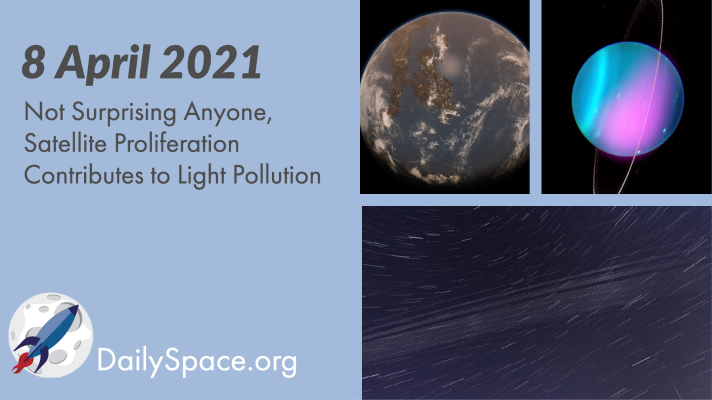
Sep 24, 2021 | Asteroids, Daily Space, Earth, Galaxies, Mars, Moon, Neptune, Observatories, Rovers, Sky Watching, Supernovae, Uranus
While searching for objects deep in the universe’s history, at about three billion years of age, researchers found six massive but “dead” galaxies in Hubble and ALMA data, a strange finding for a time period known for prolific star birth. Plus, planetary science from the EPSC2021 conference and this week’s What’s Up.

May 26, 2021 | Daily Space, Earth, Galaxies, KBOs, Mars, Moon, Neptune, Physics, Quantum, Rovers, Uranus, Zhurong
Physicists have built a pair of microscopic drums and, through quantum entanglement, have found they beat together in perfect synchrony. Plus, dwarf galaxies, China’s Zhurong rover, the East African Rift, and more about ice giants.

May 19, 2021 | Black Holes (Stellar), Daily Space, Dark Matter, Galaxies, Gemini North, Guest Interview, Mars, Neptune, Physics, Stars, Supermassive Black Holes, Uranus
Two new studies are attempting to solve a couple of big puzzles in astrophysics: Is the Hubble constant actually constant? And why do galaxies have flat rotation curves? Plus, a young star’s circumstellar disk, the search for stellar-mass black holes, magnesium in the deep waters of Neptune and Uranus, and an interview with PSI scientist David Horvath regarding possibly active volcanism on Mars.

Apr 12, 2021 | Comets, Daily Space, Earth, Galaxies, Mars, Quasar, Sky Watching, Starlink, Supermassive Black Holes, Uranus
A new study examined the effects of recent increases in the number of space objects orbiting Earth and found that the proliferation of satellites contributes to a nearly ten percent increase over natural lighting of the night sky. Plus, Mars, Uranus, Neptune, ancient Earth, volcanoes, and our weekly What’s Up segment.

Dec 16, 2020 | Asteroids, Astrobiology, Book Club, Daily Space, Exoplanets, Galaxies, Guest Interview, JAXA, Jupiter, Mars, Our Solar System, Planets, Science, Sky Watching, Uranus
HD 106906 b is an exoplanet 336 light-years away, 11 times the size of Jupiter, and possibly an analog of our own not-yet-discovered Planet 9. Plus, a large body of water ice has been discovered on Mars, and we interview lead author Dan Berman of the Planetary Science Institute. Also included, stories on Jupiter, Uranus’s moons, a young galaxy, and how space weather impacts habitability.

Nov 1, 2020 | AAS, Asteroids, Bennu Mapper, Cosmology, Daily Space, Exoplanets, JAXA, Jupiter, Neptune, Neutron Stars / Pulsars, OSIRIS-REx, Our Solar System, Saturn, Supermassive Black Holes, Titan, Uranus
Today’s top story brings us 39 new gravitational wave detections of black holes and neutron stars, courtesy of the LIGO and VIRGO detectors. Also, it’s Titan’s turn for interesting molecules in the atmosphere, and researchers examined impact craters to see what might lie beneath Titan’s surface. Plus, Hayabusa2’s impact on Ryugu and an updated origin story for Jupiter and Saturn.








 We record most shows live, on Twitch. Follow us today to get alerts when we go live.
We record most shows live, on Twitch. Follow us today to get alerts when we go live.